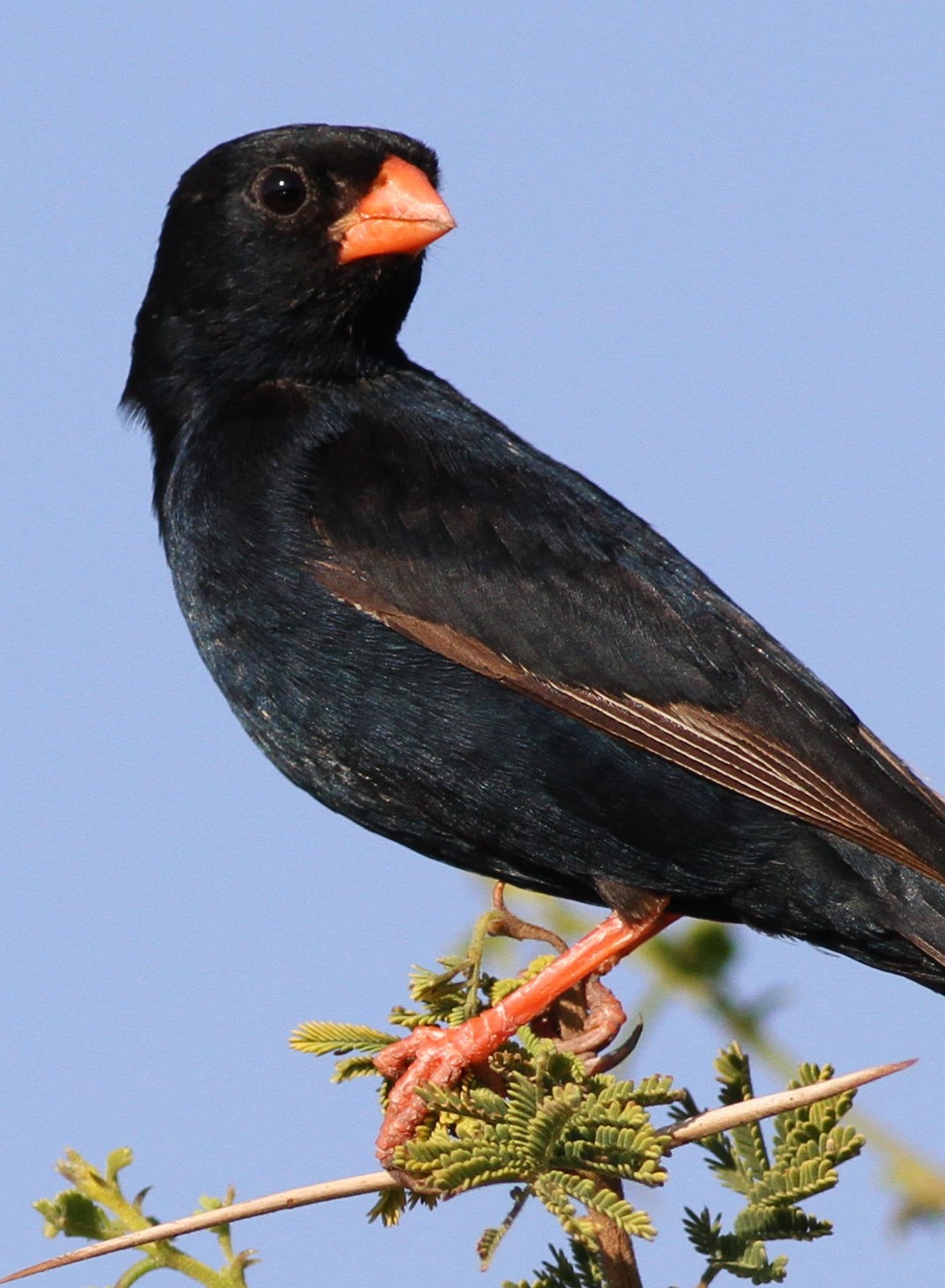Village Indigobird
A species of Indigobirds and whydahs Scientific name : Vidua chalybeata Genus : Indigobirds and whydahs
Village Indigobird, A species of Indigobirds and whydahs
Botanical name: Vidua chalybeata
Genus: Indigobirds and whydahs
Content
Description General Info
Description
The village indigobird is 11–12 cm in length. The adult male is entirely greenish-black or bluish-black except for his orange-red legs and conical white bill. The female resembles a female house sparrow, with streaked brown upperparts, buff underparts, a whitish supercilium and a yellowish bill, although she also has red legs. Immature birds are like the female but plainer and without a supercilium. Many of the indigobirds are very similar in appearance, with the males difficult to separate in the field, and the young and females near impossible. Helpful pointers with the village indigobird are the association with its host species, the red-billed firefinch, and its presence near human habitation. 
Size
11 cm
Nest Placement
Tree
Feeding Habits
Village Indigobird's diet is primarily small grass and cereal seeds, taken from the ground and occasionally foraged from agrarian sources like fonio and millet. They partake in termites during emergence and feed on host eggs. Unique behaviors include seed theft from ants, scratching earth to find food, and foraging intensity increasing pre-roost. Breeding males eat near song trees, whereas flocks feed together off-season.
Habitat
Village Indigobird inhabits broad sub-Saharan African regions, often found in open woodlands, scrublands, and areas influenced by agriculture. Preferring environments with human presence, they thrive near villages and water sources, with Echinochloa grass-dense areas being ideal for foraging. Their adaptable nature allows them to flourish from sea level to highlands over 2000 meters.
Dite type
Granivorous
General Info
Feeding Habits
Bird food type
Behavior
The male village indigobird is territorial, and he has an elaborate courtship flight display. The song is given from a high perch, and consists of rapid sputtering and churring intermingled with mimicry of red-billed firefinch's song, especially the characteristic chick-pea-pea-pea. The diet of this species consists of seeds and grain. 
Distribution Area
It is a resident breeding bird in most of Africa south of the Sahara Desert. This indigobird is found in many open habitats including open woodland, scrub and cultivation, but, as its name implies, it is most readily seen near villages. 
Species Status
Not globally threatened.
Scientific Classification
Phylum
Chordates Class
Birds Order
Perching birds Family
Indigobirds and whydahs Genus
Indigobirds and whydahs Species
Village Indigobird 